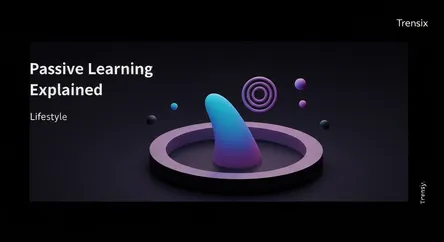Lifestyle
Passive Learning Explained

Discover passive learning, a method of acquiring knowledge through observation and listening without direct engagement. Learn its pros and cons.
What is it?
Passive learning is an educational method where the learner receives information without active participation. Think of a traditional lecture, watching a documentary, or listening to a podcast. In this model, knowledge flows in one direction: from the source to the student. The learner's primary role is to absorb the material through listening and observation, rather than engaging through discussion, problem-solving, or hands-on activities. It's often contrasted with active learning, which requires direct involvement with the subject matter.
Why is it trending?
The concept is trending largely due to the explosion of digital content. With countless online courses, webinars, and educational videos available, passive learning has become incredibly accessible. Its convenience appeals to busy lifestyles, allowing people to learn while commuting, exercising, or doing chores. This low-barrier entry makes it easy to explore new topics. Furthermore, the ongoing debate in education about its effectiveness versus active learning keeps it a persistent topic of discussion among students, educators, and lifelong learners.
How does it affect people?
Passive learning allows for the efficient dissemination of foundational information to a broad audience. However, its major drawback is often lower knowledge retention and underdeveloped critical thinking skills. Without active engagement, information can be quickly forgotten. It may foster a superficial understanding of a topic rather than deep comprehension. For many, it serves as a good starting point, but to achieve true mastery, it's most effective when combined with active learning techniques like practice problems and applying the knowledge in real-world scenarios.